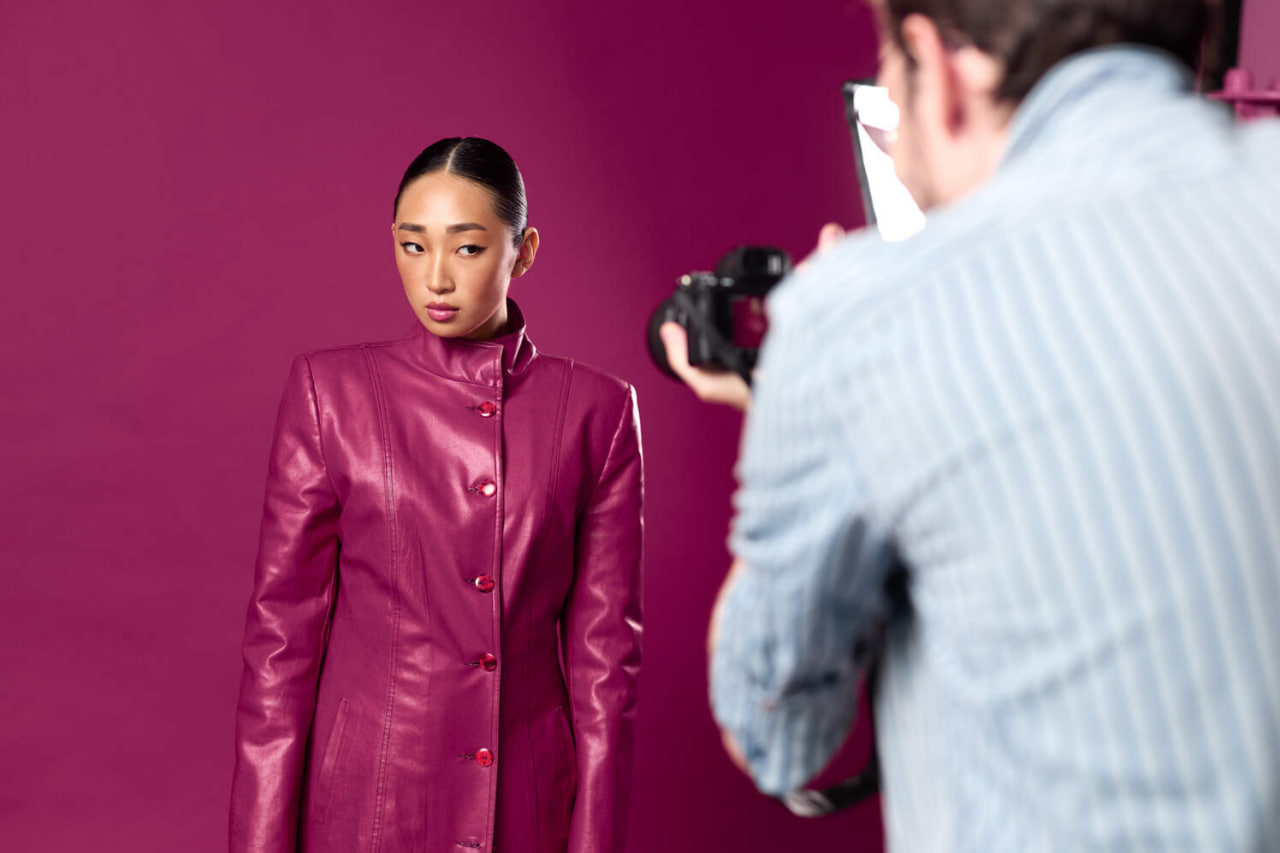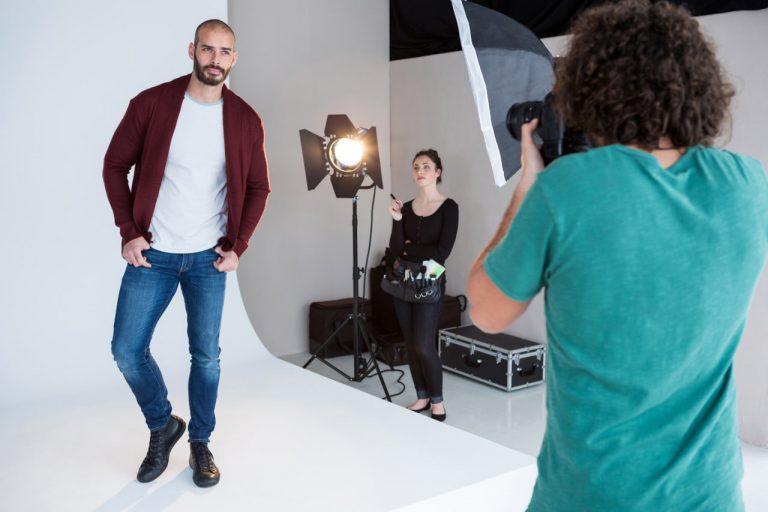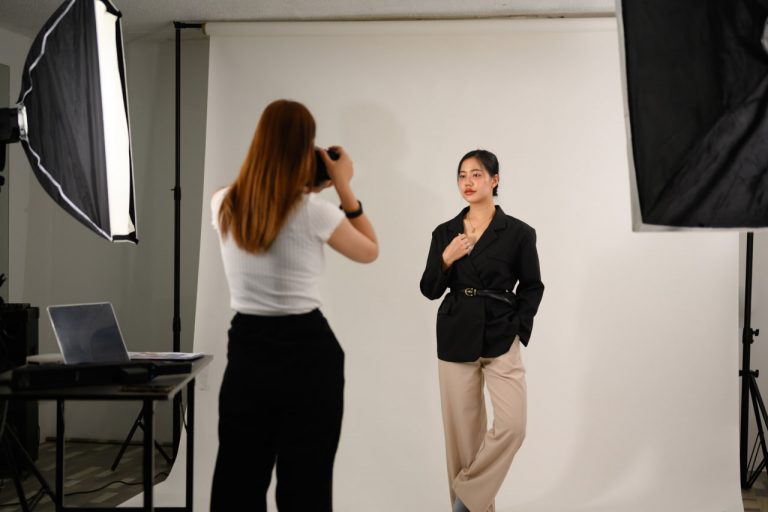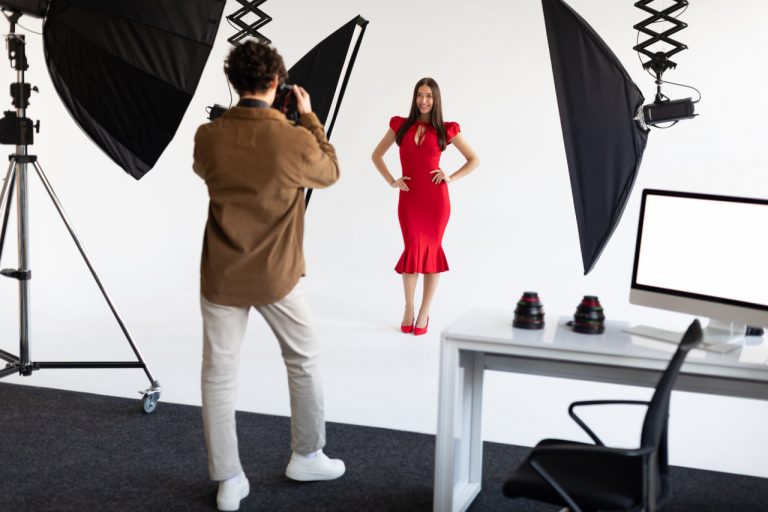Monday to Saturday - 8:00 -17:30

Fashion photography is not just about showcasing clothing—it’s about telling a story. Editorial shoots transform garments into narratives, blending creativity, mood, and concept to engage the audience on multiple levels. Storytelling in fashion editorials allows photographers, stylists, and models to collaborate in creating imagery that is both visually captivating and emotionally resonant.
Understanding Narrative in Fashion
At its core, storytelling in fashion is about conveying a message through visuals. Each element in a photograph contributes to the narrative—clothing, location, lighting, model expressions, poses, and even post-production choices. A successful editorial has a clear concept, a consistent theme, and a mood that aligns with the fashion being presented.
Before the shoot begins, photographers must define the story they want to tell. Is it a romantic tale, a high-energy urban vibe, or a futuristic fashion fantasy? Establishing a narrative helps guide creative decisions and ensures every shot contributes to the overall concept.
Crafting a Strong Concept
A compelling editorial starts with a strong concept. Mood boards, sketches, and reference images are invaluable tools for visualizing the story. Consider the following elements when crafting a concept:
- Theme and Mood – Decide on the emotional tone of the shoot. Is it dramatic, whimsical, mysterious, or playful?
- Characters and Roles – Determine how models embody characters or personas that fit the story.
- Setting and Environment – Locations, props, and backgrounds enhance context and provide visual cues that support the narrative.
- Color and Style – Colors, textures, and styling choices communicate mood and reinforce the editorial’s theme.
A well-defined concept ensures consistency and cohesion across all images, creating a powerful editorial series rather than a collection of unrelated shots.
Directing the Story Through Poses and Expression
Models are the primary storytellers in fashion editorials. Their poses, gestures, and expressions convey emotion and drive the narrative forward. Photographers must guide models to inhabit their roles fully, ensuring that body language aligns with the story’s tone.
Movement and interaction with the environment can also enhance storytelling. A model walking through a bustling street, interacting with props, or responding to natural elements like wind or water creates a dynamic narrative that captivates viewers. Subtle nuances, such as a glance or a tilt of the head, often add depth and authenticity to the story.
Lighting and Composition as Narrative Tools
Lighting is a powerful storytelling device in fashion editorials. High-key lighting can create a sense of purity, joy, or fantasy, while low-key lighting evokes drama, mystery, or intensity. Direction, quality, and color of light help define the mood and emphasize key elements of the composition.
Composition guides the viewer’s eye and shapes the story visually. Leading lines, framing, symmetry, and negative space can all be used to highlight garments, emphasize emotion, or suggest movement within the scene. Thoughtful use of composition transforms individual photographs into a cohesive visual narrative.
Post-Production and Story Enhancement
Post-production allows photographers to refine and amplify the story conveyed in each image. Adjusting color grading, contrast, and exposure enhances mood, while selective retouching draws attention to key details. Creative editing, such as layering textures or adding atmospheric effects, can further immerse viewers in the editorial’s narrative.
The goal is to maintain authenticity while elevating the storytelling. Subtle enhancements often produce more impactful results than over-processing, allowing the fashion and narrative to remain the focal point.



